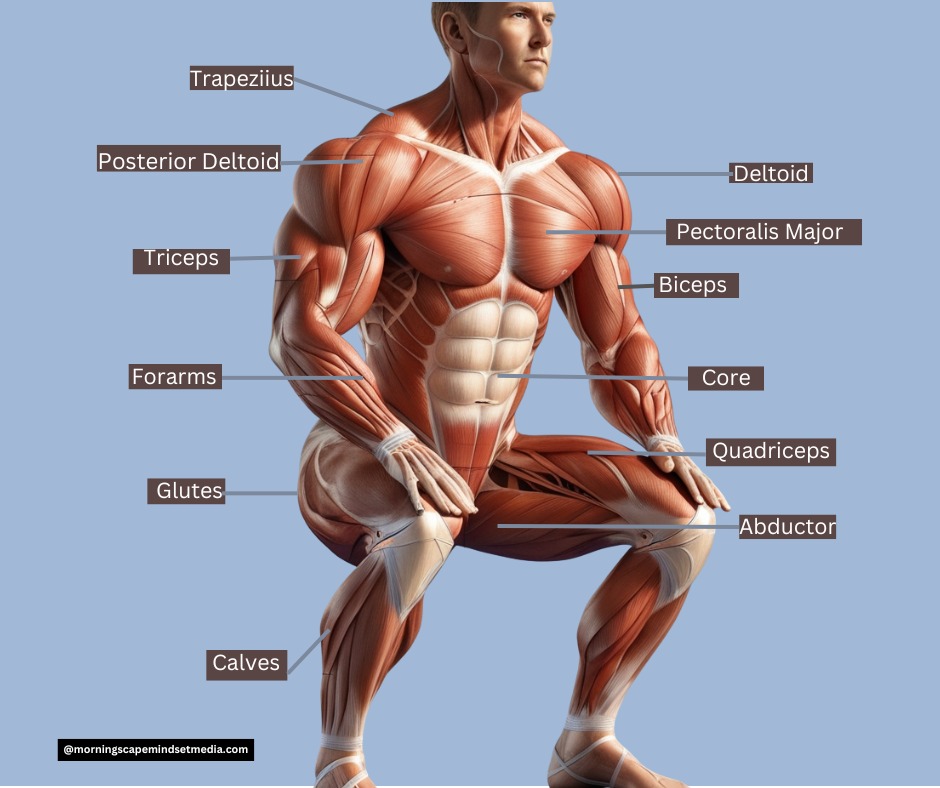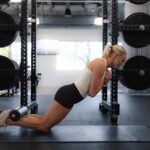Disclosure:
Thank you for reading this post, don't forget to subscribe!
Some of the links on this website are affiliate links. This means that if you click on the link and make a purchase, we may receive a small commission at no extra cost to you. Your support helps us keep the site running.Learn more on my Privacy Policy and Affiliate Disclosure page. Thank you for your support!
Squats are a foundational exercise for building lower body strength, improving mobility, and enhancing overall fitness.They’re essential for building a strong foundation, improving balance, and increasing core strength. But with so many variations and nuances to consider, mastering the squat can seem daunting. But Perfecting the form is crucial to reap these benefits and avoid injury.
This comprehensive guide is your one-stop resource for everything you need to know about squats. Whether you’re a beginner just starting out or an experienced lifter looking to refine your technique, we’ve got you covered.
In this guide, you’ll learn:
- The benefits of squatting and why proper form is crucial
- A step-by-step breakdown of perfect squat form
- Common mistakes to avoid and how to fix them
- Advanced techniques to take your squats to the next level
- Answers to frequently asked questions about squatting
- Expert tips for maximizing your squat performance
Let’s dive in!
Why Master the Squat?
Squats are a compound exercise that engages multiple muscle groups simultaneously, making them incredibly efficient for building strength and muscle. Here are some key benefits:
- Increased Muscle Mass: Squats target your quads, glutes, hamstrings, and calves, promoting muscle growth in your lower body.
- Enhanced Core Stability: Squats require core engagement to maintain balance and stability, leading to a stronger core.
- Improved Functional Strength: Squats mimic everyday movements like sitting down and standing up, improving your ability to perform daily tasks with ease.
- Better Joint Mobility: Squats promote hip and ankle mobility, which can help prevent injuries and improve overall movement quality.
- Higher Caloric Burn: As a compound exercise, squats burn more calories than isolation exercises, aiding in weight management.
read next:
Complete Guide To Mastering The Deadlift
The deadlift is one of the most effective compound exercises,…
7 Best Workouts For Stronger Legs
Strong legs aren’t just for athletes. They’re your foundation for…
Learn more about strength training basics and safety protocols in our comprehensive guide: “The Importance of Proper Form in Strength Training: Maximize Gains & Prevent Injury.“

Step-by-Step Form Guide
Proper form is essential for maximizing the benefits of squats and preventing injuries. Here’s a breakdown of the key phases:
1. Setup Phase:
- Foot Placement: Stand with feet slightly wider than shoulder-width apart, toes pointed slightly outward (around 15-30 degrees).
- Core Engagement: Brace your core muscles to stabilize your spine.
- Chest Up: Maintain an upright torso with your chest lifted.
- Shoulders Back: Keep your shoulders back and down, avoiding rounding.
2. Execution Phase:
- The Descent:
- Initiate the movement by hinging at your hips, as if you’re sitting back into a chair.
- Lower your body in a controlled manner, keeping your back straight and core engaged.
- Ensure your knees track over your toes, but don’t let them excessively cave inward.
- The Bottom Position:
- Aim for your thighs to be parallel to the ground or slightly below, depending on your mobility and comfort.
- Keep your knees aligned with your toes.
- Distribute your weight evenly across your feet, with a slight emphasis on your heels.
- Maintain core engagement throughout.
- The Ascent:
- Drive through your heels to push yourself back up to the starting position.
- Maintain the same torso angle throughout the ascent.
- Keep your chest up and avoid leaning forward.
- Squeeze your glutes at the top to fully extend your hips.
Visual Aid: [Insert an image or video demonstrating proper squat form]
Common Mistakes and Expert Solutions
Even experienced lifters can make mistakes with their squat form. Here are some common errors and how to correct them:
- Knee Cave-In (Valgus): This occurs when your knees collapse inward during the squat.
- Solution: Strengthen your glute medius muscles (with exercises like lateral band walks and clamshells), practice band resistance during squats, and focus on actively pushing your knees outward.
- Buttwink: This refers to the rounding of your lower back at the bottom of the squat.
- Solution: Improve hip mobility (with stretches like pigeon pose and hip flexor stretches), strengthen your core stability, and consider temporarily reducing your squat depth until your mobility improves.
- Forward Lean: Leaning too far forward during the squat can strain your lower back.
- Solution: Enhance ankle mobility (with stretches like calf stretches and ankle dorsiflexion exercises), strengthen your upper back muscles (with exercises like rows and pull-ups), and practice wall squats to improve your form.
Advanced Techniques for Experienced Lifters
Once you’ve mastered basic squat form, you can explore advanced techniques to further challenge yourself and enhance your performance:
- Tempo Training: Vary the speed of your squats to emphasize different phases of the movement. For example, a 3-1-3 tempo squat involves a 3-second eccentric (lowering) phase, a 1-second pause at the bottom, and a 3-second concentric (lifting) phase.
- Progressive Overload Methods: Continuously challenge your muscles by gradually increasing the weight, reps, or sets of your squats over time. You can also experiment with different variations like pause squats, front squats, and box squats.
Recovery and Mobility Work
Adequate recovery and mobility work are essential for preventing injuries and optimizing your squat performance.
- Daily Mobility Routine: Incorporate hip flexor stretches, ankle mobility drills, and foam rolling into your daily routine.
- Rest and Recovery: Allow for sufficient rest between squat workouts to allow your muscles to recover and rebuild.
Nutrition for Optimal Performance
Proper nutrition plays a crucial role in supporting your training and recovery.
- Pre-Workout Nutrition: Consume a meal containing complex carbohydrates and moderate protein 2-3 hours before your workout.
- Post-Workout Recovery: Replenish your energy stores with quick-absorbing protein and fast-acting carbohydrates after your workout. Stay hydrated by drinking plenty of water throughout the day.
FAQ Section (Based on Search Intent)
- How long does it take to master squats? With consistent practice and proper form, most beginners can develop proficient squat technique within 4-6 weeks.
- What’s the ideal squat depth? The ideal squat depth varies by individual, but generally, thighs parallel to the ground is considered standard for most training goals.
- How often should I squat? For beginners, 2-3 times per week with proper recovery is optimal. Advanced lifters may squat up to 4 times weekly with proper programming.
Expert Tips and Tricks
- Form Check Protocol: Record yourself squatting from multiple angles (front, side, back) to analyze your form and identify any areas for improvement. Track your progress weekly to monitor your improvements.
- Mental Cues: Use mental cues to reinforce proper form. For example, “spread the floor” to engage your glutes, “screw your feet into the ground” to create a stable base, and “proud chest” to maintain an upright torso.
explore more:
The Science of Stillness: How Doing Nothing Can Heal Your Mind and Body
The Relentless March of Modern Life: A Crisis of Constant DoingIn our modern world, the…
Are You a Late-Night Snacker? 5 Possible Reasons Why You Can’t Stop Craving Food at Night
We’ve all been there — it’s 10:30 PM, dinner’s long over, and yet, your mind…
The Ultimate Fat-Loss + Muscle Retention Blueprint (For Men)
“Cut fat. Hold muscle. Fuel smart. Repeat.”If your goal as a man is to maximize…
Smart Biceps Training: A Science-Backed Blueprint for Bigger, Stronger Arms
Skip the fluff. Build arms that look powerful and perform even better.“Biceps day” is a…
Life After Rehab: Living with Resilience and Finding New Strength
“Healing isn’t about returning to who you were — it’s about discovering who you’re becoming.”When…
Safety and Injury Prevention
Always prioritize safety when squatting.
- Essential Safety Tips:
- Warm up thoroughly before each workout.
- Gradually increase the weight you lift over time.
- Perform regular form checks to identify and correct any issues.
- Allow for adequate recovery between workouts.
- If you have any pre-existing injuries or concerns, consult with a qualified healthcare professional before starting a squat program.
related article from outside network:
- For in-depth information on squat biomechanics and injury prevention, check out this resource from the National acadamy of sports and medicine: NASM.
- This article from StrongLifts provides a detailed guide to squat programming and progression:Stronglifts 5×5 Ultra.
Conclusion
Mastering the squat is a journey that requires patience, consistency, and a dedication to proper technique. By following this guide, staying committed to proper form, and incorporating expert tips, you’ll build a strong foundation for all your fitness goals.
Action Steps:
- Assess your current squat form.
- Begin an appropriate progression based on your fitness level.
- Track your progress weekly and reassess your program monthly.
- Stay consistent with your training and prioritize proper form.
Fitness experts often highlight the importance of seeking advice if you’re struggling with form. Engaging with a trainer, even for a few sessions, can offer personalized insight into your squat technique, ensuring you’re on the right path to improvement.
more about:
HEALTH / WELLNESS / FITNESS / NUTRITION
share this article















